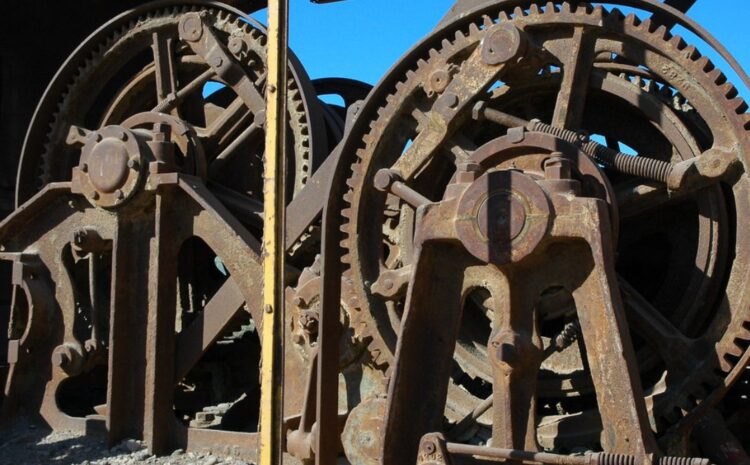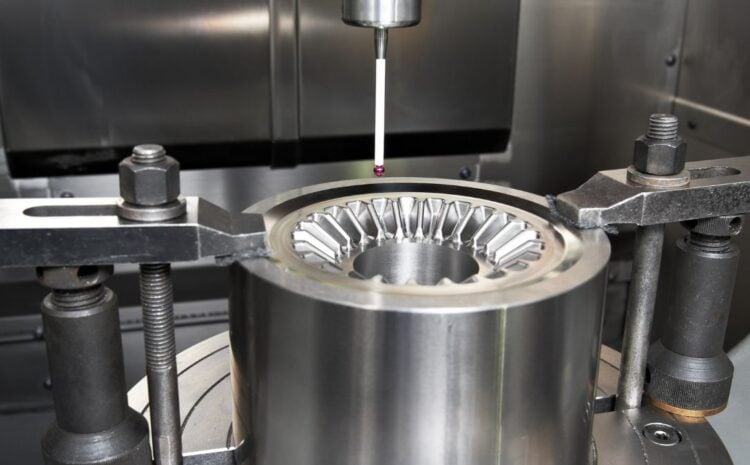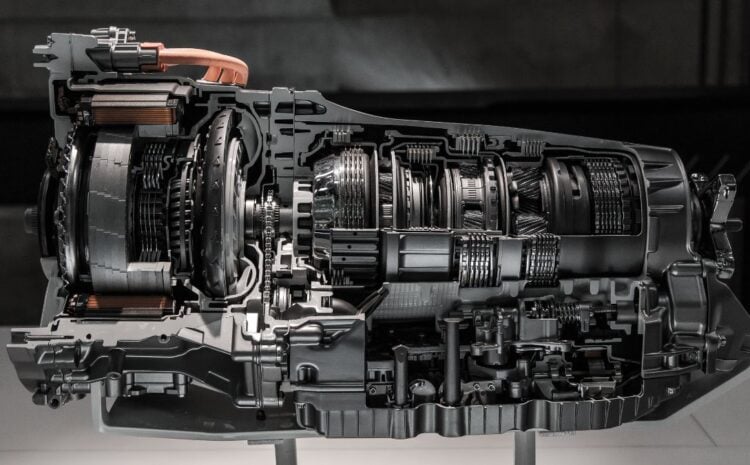Mining plays a crucial role in modern society by supplying essential raw materials used in numerous other industries, such as construction, manufacturing, and even energy generation. The mining industry relies heavily on mining gears, which include the machinery and equipment used to successfully and safely mine for minerals and other resources deep within the earth. In this piece, we’ll go over the various mining gears available, their respective benefits, and the criteria that should guide your decision.
Types of Mining Gears
The three main categories of mining equipment are hoist equipment, haulage equipment, and crushing equipment. Transporting equipment and materials vertically requires hoist gear, whereas moving them horizontally requires haulage gear. To reduce large rocks and minerals into smaller, easier-to-manage pieces, crushing equipment is used.
A. Hoist Gear
Hoist gear used to raise and lower materials and machinery is a crucial component of the mining industry. A wire rope, drum, motor, and gearbox make up its component parts. The motor transmits power to accomplish drum rotation. Winding wire rope around a rotating drum raises or lowers the load.
Mining companies typically use hoist gear to transport materials and equipment from the underground levels to the surface. It is an essential component of mining operations and is particularly useful in deep mines where transporting materials manually would be impossible.
Advantages of Hoist Gear
- Efficiency and productivity gains result from the use of hoist gear, which moves materials and equipment quickly and effectively, cutting down the time needed for transportation and boosting productivity.
- Improved safety and reduced risk. Hoist gear lessens the need for manual labor, which lowers the risk of accidents and injuries related to manual material handling.
- Enhanced accuracy and precision: The designers have designed the hoist gear to move loads precisely and reduce the risk of damage to materials or equipment.
- Cost-effectiveness and profitability: Hoist gear can transport materials and equipment quickly and efficiently, reducing the overall cost of mining operations and increasing profitability.
- Sustainability and environmental benefits: Hoist gear reduces the need for heavy vehicles and machinery, reducing the carbon footprint of mining operations and promoting sustainability.
B. Haulage Gear
People use haulage gear to transport materials horizontally. Typically, people use it to transport materials from the mine face to the processing plant or to transport waste material out of the mine. Haulage gear includes conveyors, trucks, and trains.
The mining industry commonly uses conveyors as their primary haulage gear. A belt or chain powered by a motor moves the materials along the conveyor. Conveyors transport materials over short distances, such as from the mine face to the processing plant.
People use trucks and trains to transport materials over long distances in mining operations. They typically transport materials from the mine to a processing plant or a port for export. Trucks and trains are essential components of many mining operations, particularly in remote locations where access to other forms of transport is limited.
Advantages of Haulage Gear
- Increased efficiency and productivity:
Designers create haulage gear to transport materials quickly and efficiently, reducing the time required to move materials, and increasing productivity. - Improved safety and reduced risk:
Haulage gear reduces the need for manual labor, reducing the risk of accidents and injuries associated with manual material handling. - Enhanced accuracy and precision:
Designers design haulage gear to move loads precisely, reducing the risk of damage to materials or equipment. - Cost-effectiveness and profitability:
Haulage gear can transport materials quickly and efficiently, reducing the overall cost of mining operations and increasing profitability. - Sustainability and environmental benefits:
Haulage gear reduces the need for heavy vehicles and machinery, reducing the carbon footprint of mining operations and promoting sustainability.
C. Crushing Gear
People use crushing gear to break down large rocks and minerals into smaller, more manageable pieces. It is an essential component of many mining operations, particularly in the processing of ores and minerals. Crushing gear includes crushers, mills, and grinders.
Large rocks are reduced into smaller, easier-to-handle pieces using crushers. Crushers come in a variety of designs, including impact, cone, and jaw crushers. By exerting pressure on the rock, jaw crushers reduce large rocks into smaller fragments. Cone crushers compress rocks between a stationary mantle and a rotating cone to crush them. Impact crushers break down rocks by applying force to the rock as it travels through the machine.
Mills and grinders break down minerals into smaller, easier-to-handle pieces. They frequently grind ores and minerals into powder during processing. Rotating cylinders or blades in mills and grinders break down the material.
Advantages of Crushing Gear
- Time and effort during processing are realized through the use of crushing equipment, which takes large rocks and minerals and reduces them to smaller, more manageable pieces.
- Enhanced accuracy and precision: Materials are precisely sized when crushed, guaranteeing high quality and lowering the possibility of mistakes or inconsistencies.
- Cost-effectiveness and profitability: Crushing gear can break down materials quickly and efficiently, reducing the overall cost of processing and increasing profitability.
- The use of crushing equipment has environmental and sustainability benefits because it can lessen the number of chemicals and other materials needed for processing.
Factors to Consider in Choosing Mining Gears
When choosing the appropriate gear for a particular mining operation, several factors must be considered. These include the type of mining operation, size and capacity requirements, site conditions and accessibility, budget and cost considerations, and maintenance and repair needs.
The mining operation will determine the kind of equipment needed. Open-pit mines may need haulage gear to move materials horizontally, while deep mines may need hoist gear to move materials and equipment vertically.
Size and capacity needs will dictate the required machinery. Materials and tools for larger mines may need larger gear, while smaller mines may be able to get by with smaller equipment.
Site conditions and accessibility will determine the type and size of gear required. Remote locations may require gear that is easily transportable, while mines in more accessible locations may require larger, more stationary gear.
Budget and cost considerations will determine the type and quality of gear required. Quality gear may cost more initially but save money in the long run through increased efficiency and reduced maintenance costs.
Maintenance and repair needs will determine the type of gear required. People may prefer gear that is easy to maintain and repair over gear that requires specialized skills or equipment to repair.
Conclusion
Mining gears are an essential component of the mining industry, providing the machinery and equipment necessary to extract minerals and other resources from the earth efficiently and safely. The type of gear required will depend on the type of mining operation, size and capacity requirements, site conditions and accessibility, budget and cost considerations, and maintenance and repair needs. By choosing the appropriate gear, mining companies can increase efficiency, reduce costs, and promote sustainability, ensuring the continued success of the mining industry.



